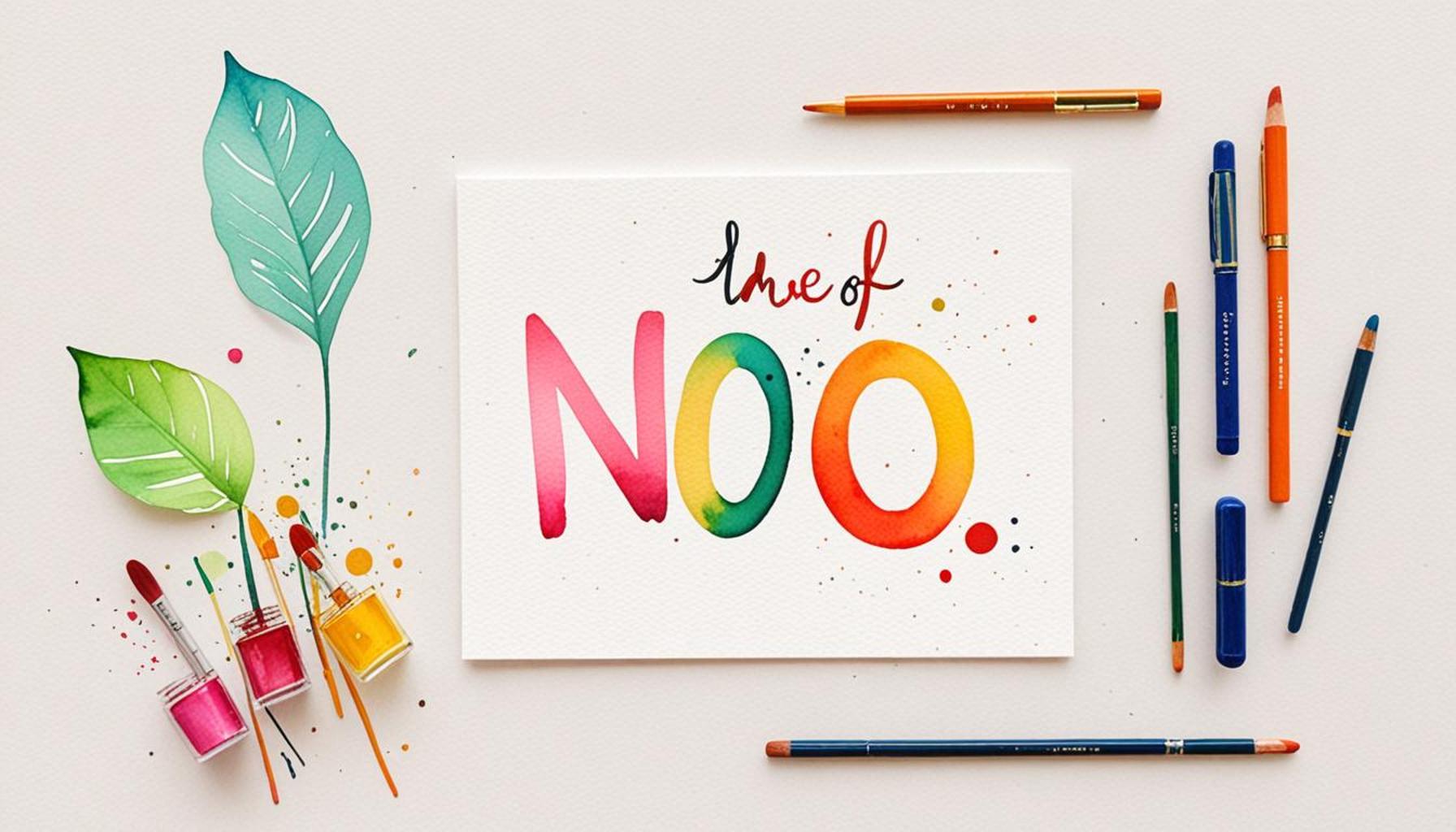The Art of Saying No: How Minimalism Helps Set Priorities in Intentional Living

The Transformative Art of Saying No
The ability to say “no” is often underestimated, yet it is a crucial skill that can significantly enhance our quality of life. In today’s fast-paced society, where commitments can stack up rapidly and distractions are rampant, mastering the art of prioritization becomes essential. Many individuals find themselves overwhelmed, struggling to juggle multiple obligations, and feeling a constant pressure to please others. However, the power of saying “no” offers a pathway to clarity and contentment.
Minimalism encourages individuals to hone in on what truly matters to them. Instead of scattering energy across various commitments, minimalism advocates for a simplified lifestyle, allowing for intentional decision-making. This approach empowers individuals to live more purposefully, rather than reactively. For example, when faced with invitations or requests that do not align with personal goals or values, embracing minimalism might guide someone to politely decline and dedicate that time and energy to pursuits that foster personal growth and satisfaction.
- Identify Core Values: Understanding what is most important to you forms the backbone of effective decision-making. This might include values such as family, health, career, or personal development. By clarifying these priorities, saying “no” becomes easier and more straightforward.
- Assess Commitments: Regularly evaluating existing obligations helps avoid the trap of overcommitment. For instance, a volunteer who feels overwhelmed may benefit from stepping back to assess whether their contributions are adding value to their life or simply draining their resources.
- Enhance Focus: Limiting distractions, whether they stem from social media, extraneous social engagements, or overcommitments at work, can help individuals redirect their energy towards achieving their defined goals. A focus on projects that ignite passion or hobbies that bring joy can lead to a more fulfilling daily experience.
Intentional living goes beyond mere time management; it is about making conscious choices that resonate with one’s values. When individuals learn to say no, they are not merely rejecting invitations or opportunities—they are affirming their priorities and establishing boundaries that lead to a more balanced and enriching life. Studies show that those who practice the art of saying no often report higher levels of satisfaction and lower stress.
As minimalism gains traction across the United States, the skill of saying no becomes increasingly pertinent. This lifestyle choice opens the door to creating space for meaningful experiences, nurturing relationships, and fostering personal growth. By eliminating the non-essential, individuals can focus on what enriches their lives, from pursuing a fulfilling career to cultivating friendships that provide genuine joy.
Exploring the profound impact of mastering this vital skill reveals its potential to transform not just your schedule but your entire approach to life. The journey of learning to say no is a powerful testament to prioritizing oneself in a world that often demands otherwise. Through this mastery, individuals can invite more peace, purpose, and positivity into their daily lives.

DISCOVER MORE: Click here to learn how to boost your productivity
Embracing Minimalism for a Purposeful Life
In an era characterized by constant connectivity and boundless opportunities, the struggle to manage our time and commitments feels almost universal. Most individuals find themselves ensnared in a web of obligations, ranging from work demands to social engagements, all of which can lead to burnout and dissatisfaction. Herein lies the beauty of minimalism—a lifestyle philosophy that champions the art of saying no while simultaneously empowering individuals to live with intention.
Minimalism does not simply advocate for the reduction of physical belongings; it extends to the way we manage our time and relationships. By stripping away the non-essential, individuals can create a framework for identifying what truly matters. This fundamental shift not only frees up time but also provides the mental clarity required for meaningful decision-making. Once one recognizes their core priorities, the act of declining additional commitments becomes almost second nature.
The Power of Values in Decision-Making
To effectively say no, it is crucial to first define your core values. This practice allows individuals to evaluate each opportunity through the lens of what aligns with those values. For example:
- Family Time: If nurturing familial relationships is a priority, declining a work-related dinner invitation becomes an easier choice.
- Health and Well-Being: A commitment to personal wellness may lead someone to say no to late-night social events that disrupt their sleeping patterns.
- Career Advancement: When prioritizing professional growth, one may opt out of voluntary projects that divert focus from key initiatives.
These decisions reflect an intentional approach, where each “no” serves to protect and uphold what truly matters to the individual. As responsibilities multiply, maintaining alignment with personal values ensures that commitments are fulfilling rather than draining. The psychological benefits of such alignment can be profound, contributing to reduced stress levels and an increased sense of satisfaction in daily life.
Evaluating Commitments Regularly
A thoughtful evaluation of existing commitments is crucial in the quest to minimize distractions. This process encourages individuals to periodically assess their current obligations and consider if they genuinely resonate with their values. One effective technique is to create a visual map or list of all commitments, distinguishing between essential and non-essential tasks. Questions to consider include:
- Is this commitment enriching my life or merely filling my schedule?
- Does it align with my long-term goals?
- Am I participating out of obligation or genuine interest?
By transparently assessing commitments, individuals can make informed choices about where to invest their time and energy. The art of saying no thus becomes an exercise in self-awareness, enabling a life that is not only simpler but also more fulfilling. This commitment to intentional living—steered by the principles of minimalism—invites deeper connections with what truly matters, promoting overall well-being.
| Advantage | Description |
|---|---|
| Clarity | Minimalism promotes a clearer mindset, enabling individuals to prioritize what truly matters. |
| Freedom | Saying no often leads to liberation from unnecessary commitments, allowing focus on significant goals and passions. |
The art of saying no, particularly through a minimalist lens, empowers individuals to welcome clarity into their lives. When the clutter of excessive commitments is removed, it creates a fertile ground for prioritization of meaningful activities and relationships. Instead of becoming overwhelmed with obligations, minimalism fosters an environment where intentional living thrives. Additionally, cultivating the ability to decline invites a sense of freedom. By focusing energy on pursuits that resonate personally, people can enrich their lives and experiences. This freedom enables one to engage more deeply in chosen areas, whether it be hobbies, self-care, or relationships, creating a more fulfilling existence. Embracing the core principles of minimalism not only enhances personal productivity but also nurtures an authentic and intentional lifestyle. Discover how the art of saying no can transform your approach to living intentionally while enriching your journey towards minimalism.
DISCOVER MORE: Click here to enhance your productivity
Cultivating Boundaries to Foster Growth
Once individuals have identified their core values and performed a thorough evaluation of their commitments, the next step involves establishing boundaries that serve to protect those priorities. Boundaries act as the framework within which personal growth and well-being can flourish. By communicating these boundaries effectively, individuals can create space for what matters most in their lives, while also conveying their limits to others.
Setting boundaries is not just about saying no; it’s about articulating intentions that guide our choices. For example, someone passionate about volunteer work might choose to limit their involvement to specific days or projects that resonate deeply with their values, rather than overcommitting out of a sense of obligation. This not only preserves the individual’s energy but also enhances their contributions to the chosen cause.
The Role of Communication in Intentional Living
The way we communicate our boundaries is vital in minimizing the potential for guilt or misunderstanding when saying no. Utilizing clear and respectful language can aid in reinforcing our intent without creating unnecessary tension. Phrases like “I appreciate the invite, but I’m focusing on my family this weekend,” or “Thank you for thinking of me, but I won’t have the bandwidth for that project,” can effectively convey one’s commitment to intentional living.
Moreover, understanding the psychology of rejection can further ease the discomfort that comes with saying no. Research shows that people often fear disappointing others and may default to yes out of a desire for approval. However, framing a “no” as a choice rooted in personal values can transform a potentially negative interaction into an opportunity for deeper understanding and respect. This approach not only respects one’s choices but also inspires others to reflect on their own commitments.
Mindfulness as a Tool for Choosing Wisely
Incorporating mindfulness practices into daily routines can enhance the ability to say no thoughtfully. Techniques such as meditation, journaling, and reflective pauses can cultivate self-awareness and clarity, helping individuals to filter out distractions. For instance, taking a few moments to pause and breathe before responding to a request can provide essential insight into whether the commitment aligns with one’s values and desires.
One interesting statistic indicates that more than 50% of adults in the U.S. experience chronic stress related to overcommitment. By adopting a minimalist mindset that integrates mindfulness, individuals can actively combat this stress by making conscious choices about how they allocate their time and resources. Engaging in practices that promote mindfulness allows a person to filter opportunities based on their alignment with personal values, encouraging a proactive approach to intentional living.
The Ripple Effects of Intentional Living
When individuals embrace the art of saying no rooted in minimalism, they not only benefit themselves but also inspire those around them. Communities thrive when members prioritize meaningful interactions over superficial commitments. By modeling intentional living, one sets an example for family, friends, and colleagues, potentially prompting a cultural shift that values quality over quantity in social connections.
As this ripple effect takes hold, it becomes evident that saying no is not just an individual act of self-preservation; it evolves into a communal responsibility. By collectively prioritizing what truly matters, communities can grow stronger, fostering deeper relationships and cultivating environments where everyone feels empowered to live purposefully. This ongoing journey of intentional living through minimalism transforms not only individual lives but can also contribute to a more balanced and fulfilling society.
DISCOVER MORE: Click here to learn how to streamline your digital life
Conclusion: Embracing the Minimalist Approach to Saying No
In a world saturated with distractions and obligations, mastering the art of saying no is an essential skill that cultivates intentional living. By adopting a minimalist mindset, individuals can more effectively prioritize their time and emotional energy towards pursuits that genuinely resonate with their core values. This conscious effort not only paves the way for personal growth, self-awareness, and healthier boundaries but also encourages a shift in how we engage with our communities.
The integration of mindfulness in decision-making processes allows for the thoughtful discernment of commitments, transforming a simple refusal into a powerful statement about one’s priorities and intentions. As more people embrace this perspective, the communal ripple effect fosters deeper, more meaningful connections, emphasizing quality over quantity in relationships. Collective adherence to intentional living can spark a broader societal change that values authenticity, mental well-being, and enrichment over mere busyness.
Ultimately, saying no is more than withholding agreement; it signifies a commitment to a life steeped in purpose and intentionality. As individuals learn to articulate their boundaries and express their values respectfully, they not only empower themselves but also inspire others to reflect on their own priorities. In navigating the complexities of modern life, the art of saying no—rooted in the principles of minimalism—becomes not just a personal journey but a transformative movement towards a more balanced, fulfilling existence for all.


